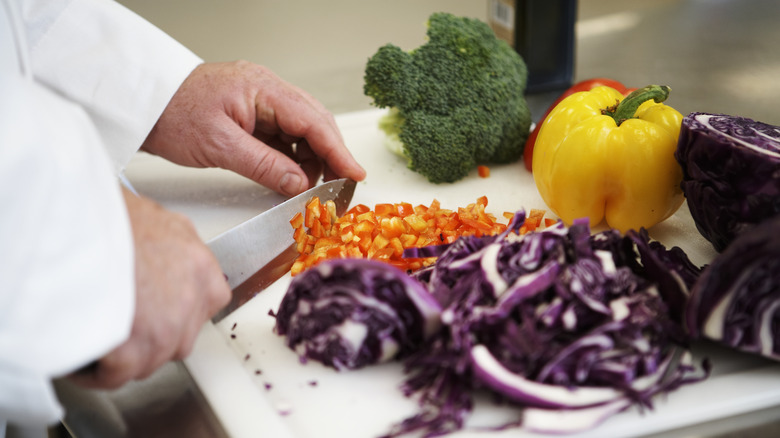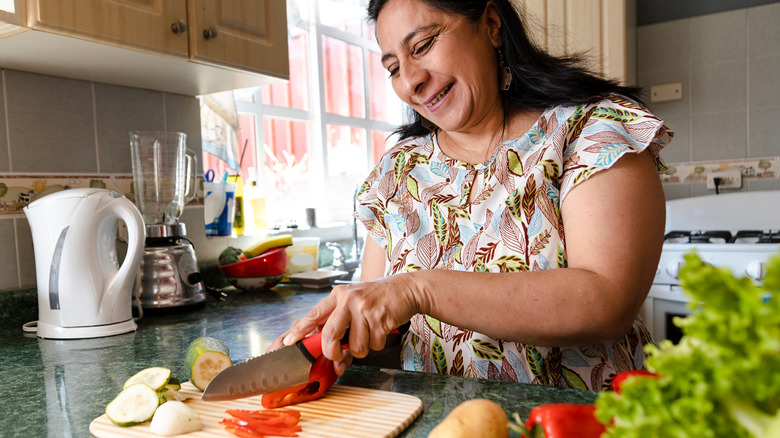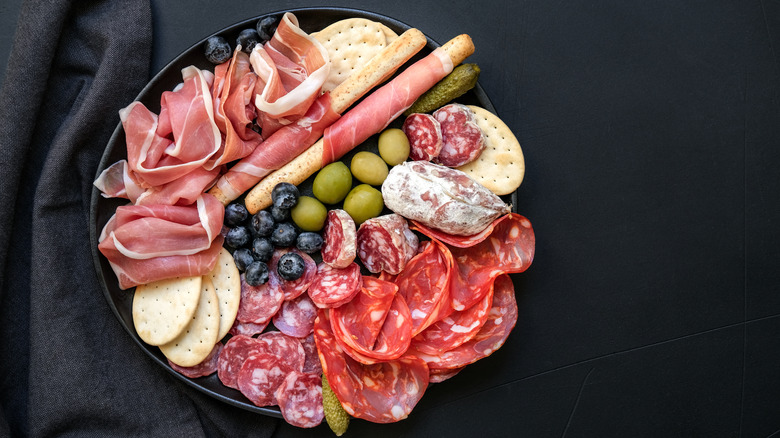What Is A Brunoise Cut (And When Should You Use It)?
You may have heard about the five basic knife cuts that will make you look like a master chef. Now let's drill down into the brunoise cut and when to use it. Created from the julienne cut, the brunoise is a fine dice larger than a mince but smaller than a rough chop. The cut is perfect for use when creating soup garnish or flavoring a sauce. Creating it should be a snap.
First, start with a sharp knife as dull ones are dangerous. A dull one can be sharpened with this unexpected kitchen item commonly found in most homes. Next, select a vegetable, or in some cases, a fruit that will hold its shape when cut down to a very small piece. You might not select a raspberry, for example. Carrots and celery are a better option.
Clean the produce, peel if needed, chop off the rough ends, and then cut into strips two to three inches long and about a quarter inch wide. Voila! You have arrived at a julienne. You have the start of a good-looking cole slaw now, but keep going. Turn the julienne 90 degrees and chop it an eighth of an inch wide. C'est fini! Now what?
How to use the brunoise cut produce
Now you'll want to do something with this pretty harvest you just diced. Before you throw it on a soup, as we mentioned, try giving the veg a quick blanch in salted, boiling water. Remove the dice and throw them in ice water to stop the cooking process. If a blanche sounds too involved, try for a quick steam, then consider your brunoise perfectly ready for your soups. Ramen makes a great candidate. Heck, throw it on a creamy tomato soup. Try it on a consomme. Birria broth kind of begs for a little onion brunoise, in our opinion.
You have more than just a supermodel garnish, however, should you demand it. Brunoise cuts lend themselves very well to the base of a soup or a stock, especially when using aromatic vegetables like onions. The small cut maximizes the vegetable's surface area and allows for flavor and aroma to flow like tears from a chef chopping onions. Your vegetable will likewise cook down nicely, which leaves plenty of room to achieve a desired texture without a lot of added heft or chunks from the dice.
But wait, there's more.
Sweet and savory options
A sometimes cited "classic" brunoise, might just take your soup or stock up a notch. That classic brunoise consists of sturdy, rustic carrots, onions, leeks, celery, and turnip. Once cut into a brunoise size, the ingredients are cooked in — what else — butter. Brunoise is a French technique, of course. Even the name is said to come from a small commune in France called Brunoy.
Other foods calling for this cut include forcemeats — a type of food of which sausage, hotdogs, meatballs, and even charcuterie are. Pate and rillette? Also forcemeat.
To go in a sweeter direction and away from savory, head to the fruit aisle. Fruit salads can absolutely exist in a brunoise cut. Try chopping up a melon, cucumber, and strawberries for a fruit brunoise. The more patience you have with those funny shapes, the better your final presentation.
And remember, it's French. So pronounce brunoise like BROON-WAHS. Now, to choose the perfect knife! But that's another story.


